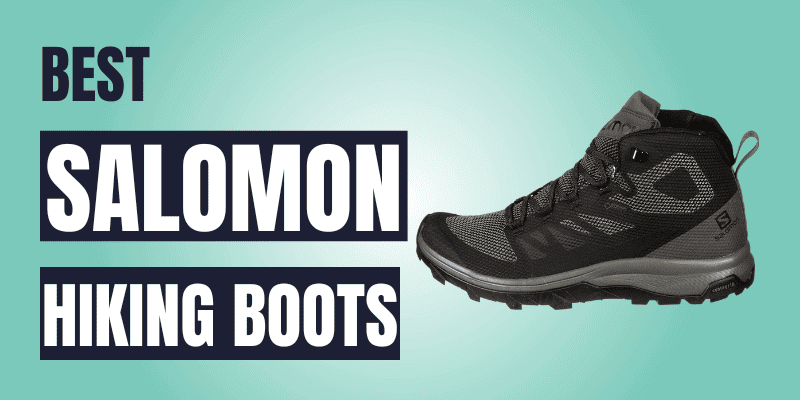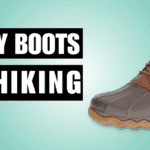Buying a boot and lacing it up are two different things! Not many people know how to lace hiking boots properly, and those impact the proper boot grip. If you have always struggled to tie the lace like a pro, here are the easiest, quickest, and most efficient steps to help.
6 Best Ways to Tie Hiking Boots Knot and Their Steps
Regarding hiking boot lace knots, only a few efficient types work for grip while staying in place during feet functionality and side by side maintaining your outlook with boots. Those types are explained below:
1. Surgeons Knot – Best to Prevent Blisters
The name Surgeon’s Knot for hiking boots says it all. It is among the best knots to prevent blisters like heel blisters and painful chafing on sensitive feet. It is easy and works efficiently to put off the strain from vulnerable joins. Here is how you tie it.
- Pull the two laces and cross them over one and the other (loosely) from the top of the instep and start twisting them. Make a loop again and pull it tightly.
- If the hiking boots have hooks, secure the lace through it, and if the boot has eyelets make sure you take the laces from the holes.
- Repeat the looping of lacing from the final eyelet and keep it sung and tight.
- Properly twist the laces towards each other, bring them through the boot’s hook or eyelet, and tie a knot as you usually would.
Here is the video of steps of “how to tie hiking boots to prevent blisters”:
2. Runner Knot – Best to Prevent Toe Pain
The runner knot is ideal for ensuring stability during hiking while seamlessly keeping off the annoying pain. Therefore, many pro-level hikers consider it the best knot for toe pain during continuous hiking, running, and descending from sharp rocks. Here is how you do it.
- You must empty the two last eyelets or hooks to make the runner knot.
- Pull the lowermost laces of the boot and send it from one eyelet/hook next to the toe.
- Now take one end of the laces and take it through the opposite eyelet that is located near the ankle.
- At this point, while using the other end, send in the lace across the other eyelet near the toes. Keep tying a knot and lock the laces as you normally do with lace-up footwear.
Here is the video of steps of “how to lace hiking boots to prevent toe pain”:
Another way:
- Make bunny loops at the last eyelets of the boot by passing the lace straight up.
- After ensuring the perfect bunny loop length, pass the laces from within the loops as you usually do while lacing.
- Tie the knot and make sure it’s tight. You can double-tie a double knot if you want to.
3. Window Lacing Technique – Best for Ankle Support
Window lacing technique is perhaps the wise way to add ankle support during hiking. It creates a window on the top of the feet which alleviates the strain and pressure especially when you hike. It’s certainly the best knot for ankle support and less likely to strain the vulnerable ankle joint. This knot suits well with high-top hiking boots. So, here is what you need to do.
- After crisscrossing the laces as you usually do, remove the laces from the last eyelets of the hooks of the hiking boot that build up pressure.
- Run the lace from the next hook but run the left end of the laces to the hoot, which is above it. Repeat this step for the other side of the eyelet on the boot. You can do this for two eyelets if you want more ankle support.
- When you have created a window through lacing, complete the lacing by crisscrossing the laces and tying a surgeon’s knot! You’re done.
Here is the video of steps of “how to tie hiking boots for ankle support”:
4. Heel Lock Lacing – Best for Downhill
Ultra-grip and the best stability are only possible with the heel lock lacing on the hiking boot. While in the best knot for downhill and descending, it also provides snug fitting that doesn’t loosen when your feet move forward.
- Wear the hiking boot and slide your heel to the back of the boot. Make sure your heel is in place snug and firm. The heel must rest in the collar area to stabilize your downhill descending.
- Now run the laces into the eyelets/hook from the outside of the boot and make a small bunny ear or a loop. Repeat it for the other side as well.
- Cross over the lace from the outside to the inside, which means the left lace will go into the right loop and vice-versa.
- This is it. Now you can tie a knot to secure the laces as you normally would.
Here is the video of steps of “how to tie hiking boots for downhill”:
5. Double-Slip Knot – Best for Backpack
Double-slip knot on the hiking boot serves supportively when you have to lift the weight. Therefore it is the best knot for a backpack. You can totally rely on the double-slip known for its secure design that never comes undone. This knot doesn’t easily slip even when you have hiked several miles. So here is how to tie it.
- First, lace up (crisscross) the boot as usual and tie a secure knot by crossing the laces.
- Now make two bunny ears loops and cross over the end, which is in front and take it to the back and pull it through the bunny ear.
- Tighten the knot by making it sung enough according to your desire.
Here is the video of steps of “how to tie hiking boots to backpack”:
6. Loop Knot – Best Knot for Heel Slippage
The loop knot is undoubtedly the best knot for heel slippage that works towards the unshakable grip and is best for snow boots. The good part is that it is easy to tie and delivers efficiency for its work. Here is how you tie the laces.
- Lace up the boot all the way, just as you usually do.
- Now take the right bunny ear and take it from over the top of the other loop and take the left laces from inside that lace loop.
- Repeat this step for the right loop by running the lace from the right loop.
- Pull in the bunny ears and make a tight yet snug knot.
Here is the video of steps of “how to tie hiking boots to prevent heel slippage”:
Frequently Asked Questions
How long are hiking boot laces?
Hiking boots have normally longer laces to ensure better grip, fitting, and snugger support for feet functionally. As a rule of thumb, the 36-inch laces are usually followed by 4 eyelets. The 45 inches laces come with 6 eyelets, whereas 54 inches laces feature 7 eyelets. Some hiking boots also have 63 inches with 8 eyelets.
Why do hiking boots have red laces?
The flashy red laces on the hiking boot are only for aesthetic sake. They look pretty energetic, so it somehow goes well for vigorous outdoor sports like hiking.
Another reason for red hiking boot laces can be their non-camouflage approach. You don’t easily get lost when looking for trails. Otherwise, there is no logical reason why hiking boots have red laces.







